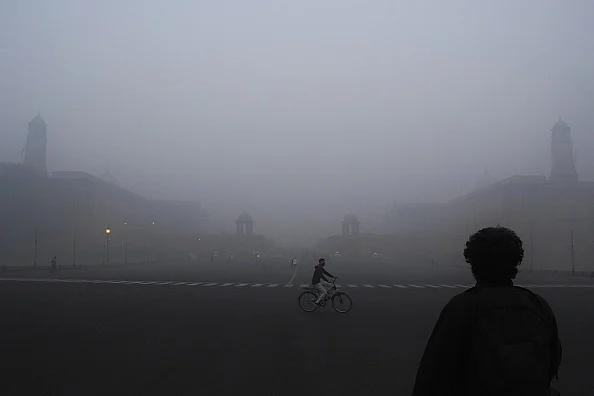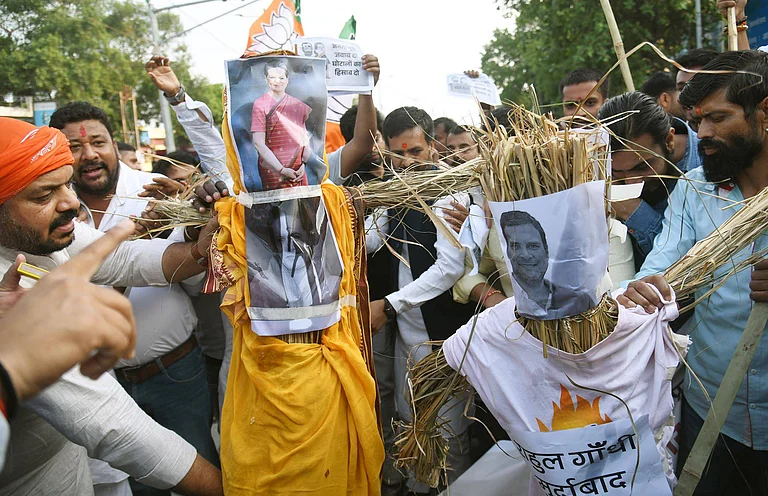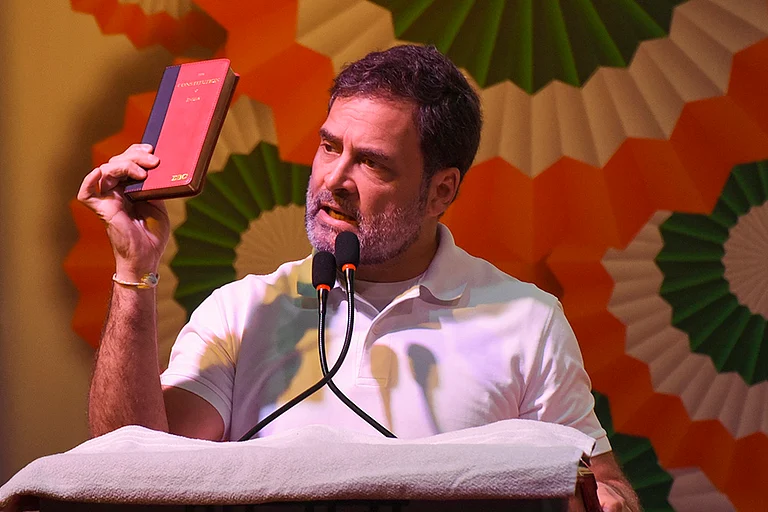Every year around September, when the wind direction changes and the winter skyline starts to set in, Delhi is covered by a thick blanket of smoke. Air pollution makes the front page, every year it turns into one of the most hotly contested political issues for India’s capital city. However, come Lok Sabha election, there is barely any word on it.
Air pollution in Delhi has been consistently alarming for the past two decades. In 2023, as per the World Air Quality Report, Delhi was the most polluted city in the world as PM2.5 levels rose by 10 per cent compared to the previous year, with levels peaking in November. The air pollution peaks during the winter months, aggravated by Diwali and post-harvest agricultural waste burning and deteriorates further as surface temperatures drop.
In addition to that, Delhi also battles acute river water pollution as a thick white toxic foam, a mixture of sewage and industrial waste, forms a layer over the Yamuna. Its arrival often coincides with air pollution and adds to a number of respiratory and skin concerns for the residents.
What are the top priorities of Delhi’s youth voters?
The health concern is not just for Delhi as pollution impacts several other states in India, including neighbouring Haryana, Punjab and Uttar Pradesh. But even for the capital city, where pollution causes thousands to fall sick and schools to be forced shut every winter, it has failed to be an electoral issue this year.
According to a survey conducted by ASAR Social Impact Advisors, Climate Educators Network (CEN) and CMSR Consultants, economic crisis, public health crisis and climate crisis (in that order) were consistently the top concerns among voters between the 18-22 age group not only in Delhi but also across Maharashtra, Tamil Nadu and West Bengal.
Do poll manifestoes have anything on pollution?
Over the past few weeks, parties have made many guarantees amid a full-throttle campaigning. A number of promises have been made around development and jobs. However, there has hardly been any mention of pollution anywhere throughout the election campaign that is about to reach its final leg.
In both the Bharatiya Janata Party and Congress manifesto, there is a mention of National Clean Air Program (NCAP) framework launched by the Union government in 2019 to improve air quality. The BJP manifesto says, “We have initiated the National Clean Air Program framework, aimed at reducing air pollution across 131 cities. Further, we will ensure that the NCAP effectively achieves and maintains the designated annual average ambient air quality standards in all regions of the nation, especially achieving National Air Quality Standards in 60 Cities by 2029.”
The NCAP was launched with a target to achieve 20 per cent to 30 per cent reduction in PM10 and PM2.5 levels by 2024, keeping 2017 as the base year for comparison of concentration. This was then further increased to 40 per cent by 2026. Most Indian cities are way behind the target. According to a study by Climate Trends and Respirer Living Sciences, based on data generated by Central Pollution Control Board, out of 46 cities tracked over the years, the PM10 level in 22 cities has worsened in the last five years, while only 8 cities have met the 2024 target of reducing pollution levels by 20 to 30 per cent.
Environmental concerns made a brief mention in Prime Minister Narendra Modi's rally in Delhi where he said that the Centre took “an important step” by giving e-buses to many cities, not just Delhi. Meanwhile, Union Minister Nitin Gadkari, during his rally in northeast Delhi, said that there has been no effort by the state government to eliminate pollution and filth in Delhi. Barring these, however, the pollution issue has barely appeared in BJP’s election campaigns.
The Congress manifesto, on the other hand, states it will “strengthen the National Clean Air Program in order to urgently tackle the problem of air pollution”. It also mentions that the party will work with state governments to stop the discharge of effluents into the rivers and water bodies of India.
Addressing a press conference last week, Congress leader Jairam Ramesh took up the issue and blamed Centre for not taking measures to reduce pollution in Delhi. "The India bloc is going to form the government and it will give priority to five issues related to the environment, including air pollution, afforestation of the Aravallis, reviving the Yamuna Action Plan," he said. This was one of the few times a leader of the INDIA bloc addressed the environmental concerns in these elections.
In both BJP and Congress manifesto, the primary environmental focus appears to be renewable energy. While Congress aims to provide clean cooking fuel at affordable prices, the BJP manifesto focuses on environment-based schemes like “PM Surya Ghar Yojana, Railway Electrification, PM e-Bus, promotion of EVs, ethanol and bio-fuel promotion”.
The Aam Aadmi Party’s ‘10 guarantees’ do not include anything to address Delhi’s pollution crisis. Chief Minister Arvind Kejriwal, who was released on bail on May 10, also did not bring up pollution in his speeches. As for the candidates, too, pollution and environmental concerns seem to not appear in any of their speeches.
“Pollution and climate crisis matters to the voters because it is a public health emergency. In a survey, it was found that 80 per cent of citizens are not breathing clean air and this is not just Delhi. In 2019, there was still talk about climate crisis but this time, political parties are not taking it seriously and simply passing the buck to each other,” says Avinash Chanchal, campaign manager, Greenpeace India.
“There needs to be better coordination between state and central agencies,” he adds.




























